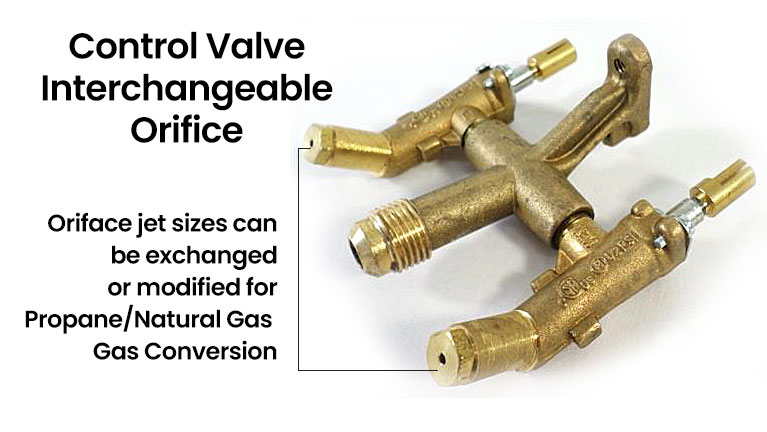Converting your BBQ Grill from Propane to Natural Gas
You’ve got yourself a propane grill, but you’re eyeing the natural gas hookup. First off, kudos for thinking ahead! Converting is like leveling up your grilling game.

The Meat of it All
If you are interested in converting your grill, you'll need a conversion kit. The best place to start is to contact your manufacturer or the dealer where you purchased your grill to assure compatibility. Kits usually include a new regulator, hose, and natural gas orifices for your burners. Your grill manufacturer might sell these, or you can find third-party kits.
Fundamentals
There is no single and easy way to safely or properly convert your grill by simply drilling the orifice or changing the supply line. All components have to be considered to maintain the integrity and safety of the system. Gas grills, like any other appliance, are designed and engineered to definite specifications with specific components. Scroll down for more information about orifice sizes and flow characteristics.
Get to know your Nameplate

Nameplate Data: You’ll need this vital information for the conversion kit you’ll be tracking down.
BTU Ratings: Grill models are individually designed to operate at specific BTU ratings. The BTU rating is a measurement of how much heat your grill will generate and this rating can be found on the nameplate data on your grill. The nameplate data may state the BTU rating in two different ways - as per burner or as a total rating for the grill. As an example the rating may be 40,000 BTUs total or 20,000 BTU’s per burner. (This becomes particularly confusing when you model incorporates a "dual" burner which is manufactured as a single unit with each side individually controlled by it’s own control knob. In this case each side would have a 20,000 BTU rating for a total of 40,000 BTUs.) Typical grills don’t exceed 40,000 BTUs, but there are many high-heat exceptions.
Your Grills Warranty, Certification and Design: In the majority of cases if you change the supply type or convert your grill from one type to another you will void all warranties and certifications. Gas Grills are designed and certified to operate on a single type of gas supply. The type of gas will be shown on the nameplate data. Some premium brand manufacturers offer conversion kits and will not eliminate your warranty. Check with your local dealer or the manufacturer.
Scroll down for more information of Gas Conversion